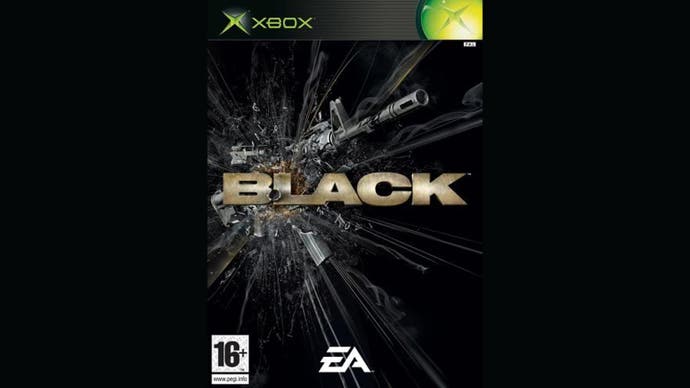Ex-Criterion staff reveal scrapped plans for Black sequel
Shot in the dark.
Former staff members at Burnout developer Criterion have revealed their scrapped plans for a sequel to the studio's first-person shooter project Black.
When Black launched in 2006 for PlayStation 2 and the original Xbox, it promised to be Criterion's revolutionary take on the FPS genre - just as Burnout had won legions of fans for the studio's version of racing.
The game recieved largely positive reviews, though early plans for a sequel never materialised. Some who worked on the game, including its namesake Stuart Black, later left to make Bodycount - a spiritual successor developed by Codemasters.
Now, however, in a lengthy series of interviews on the original Black and its development, several former developers have spoken to thatHITBOX of their early work on a Black sequel at Criterion.
Perhaps most notable were plans to include "network gameplay" for co-op, with a recovery system if one played was downed. The lack of multiplayer had been a criticism of the original.
"I think the subtitle was going to be 'Rendition'," said Ben Minto, a technical sound designer on the original Black. "The idea centred on American troops going overseas, kidnapping people and bringing them back across borders... I'm not sure that there was a fully-fledged story mapped out though."
"We had an amazing [first person] cover mechanic where you could position yourself against things and blind fire," added Black level designer Michael Othen. "It felt intuitive and organic. There were some cool enemy AI behaviour with the way they moved around the environment. You'd see them jumping over car bonnets and sliding into cover. It looked amazing as a player, because you had that dynamic flow of movement. These were just very early ingredients at the R&D stage."
"They wanted to continue to be influenced by movies. They employed a model builder to build miniatures of lifelike locations," said Black senior game designer Richard Bunn. "One of the aspects of pre-vis that stood out was they wanted to have more realistic scenarios. More of this assassin type gameplay, where you'd go into real locations that were a bit more alive, with other people, and take out a target. Essentially a bit like Hitman."
A live-action sequence was filmed set in a cafe, with the camera attached to an actor's chest while a gun was held in place to simulate the first-person shooter view. One idea was to allow players to move their gun independently of their viewpoint while remaining in first-person. And at least one level was built - of a missile silo in Korea, where the player fails to stop a rocket from firing.
"You're in a big open area, with great big concrete blocks as cover objects. There's enemies coming in," he recalled. "While you're fighting, other vents start opening up and the whole area gets filled with smoke and gas from the rocket launch causing loss of visibility. It's getting closer and closer to launch, and the whole environment gradually reflected that. Eventually it opens and this great big missile launches out the middle. It was all about the evolution of the gameplay environment."
Why did the world never see a sequel? Criterion was busy with Burnout Paradise, while the shooter market was looking crowded.
"There were a lot of other shooters coming out, even within EA," Othen concluded. "Bad Company was experimenting with destructible levels. It might have been difficult for them to see where a 'Black 2' fitted in with other games in their publishing schedule. I was disappointed that it didn't get to see the light of day."
The full article on thatHITBOX with a deep-dive into the original Black's development is well worth a read.




